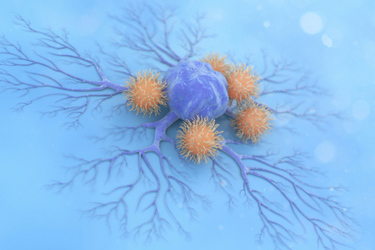Navigating The Complexities Of NK Cell Therapy Development

By Erin Harris, Editor-In-Chief, Cell & Gene
Follow Me On Twitter @ErinHarris_1

Natural killer (NK) cells are promising due to their innate ability to recognize and eliminate cancer cells without prior sensitization. Unlike autologous CAR-T therapies, NK cell therapies are often pursued as allogeneic products, which could provide scalability advantages and broader patient access. However, developers face significant challenges in manufacturing, supply chain, and commercialization as they work to bring these therapies from early-phase trials into later-stage development and market readiness.
I caught up with Amit Agarwal, Managing Director in Deloitte Consulting’s Life Sciences practice, and Ashraf Husain, Manager in Deloitte’s Strategy & Transactions practice focused on NextGen CGT for detailed insights into the evolving NK cell therapy landscape. Agarwal and Husain offer strategic guidance on how companies can optimize processes early, build resilient supply chains, and balance innovation with manufacturability to ultimately accelerate patient access.
How can developer companies ensure the consistent quality, purity, and potency of NK cell products given the technical difficulties in expanding, transducing, and cryopreserving these cells?
For the most part, we have seen drug developers working on NK cell therapies adopt an allogeneic modality. It has been observed that multiple companies can prepare genetically modified NK cells for pre-clinical animal studies and phase 1 clinical trials (with small number of 25-50 patients).
However, for the modality to progress, manufacturers must be able to scale for later stage trials and commercial use.
Some of the challenges that we have seen companies face:
- Getting a sufficient supply of well characterized NK cells from commercial vendors and or tissue banks that can scale with increasing patient needs
- Success rates of transfection/transduction to create genetically modified cells are low across viral (lentiviral and others) and non-viral methods (electroporation, LNP, etc.) with each having their own benefits and challenges
- Issues of accuracy and efficiency of gene editing mechanisms to make multiple insertions and deletions e.g. CRISPR, TALENS, etc.
- Lack of optimized methods to cryopreserve that maintain cell viability and function
To overcome the challenges, companies should evaluate the following strategies:
- Optimize key processes in early clinical with an eye on commercial before tech transfer to a CDMO / internal manufacturing
- Determine and test for the minimum number of viable cells required for therapeutic dose
- Constant oversight of process for variability even post transfer to CDMO / internal manufacturing
What are the unique logistics and supply chain hurdles for NK cell therapies, especially in allogeneic settings? How do these unique hurdles impact timelines, patient access, and commercialization strategy compared to autologous therapies?
The unique logistics and supply chain hurdles for NK cell therapies are predominantly linked to the outbound shipment logistics.
- Allogenic products often have short shelf-lives post-thaw and require precise coordination between manufacturing, shipment, and clinical administration to maintain viability. For example, an allogeneic therapy we are familiar with is thawed at a local hub and needs to be administered within 24 hours limiting growth. They would benefit from a formulation, which could be shipped frozen and thawed at the site.
- If the therapy requires the patient to have ablation, scheduling the ablation before the drug product is received can be challenging.
- Overall, while allogeneic NK therapies could reduce vein-to-vein time compared to autologous CAR-T products, market uptake will depend on the clinical data.
Given the high costs associated with cell therapy manufacturing and delivery, what market access strategies are most viable for NK cell therapies? How might these differ from established CAR-T or gene therapy pathways?
Given the early stage of development of NK therapies, we are unclear if the real-world manufacturing costs is lower as compared to autologous therapies. Theoretically, allogenic therapies should be able to scale and reduce unit cost for patients.
NK therapies because they do not require individual cell collection and processing should be administrable in community settings which could expand the patient population. This will of course depend on the strength of the clinical data and the severity of adverse events experienced in clinical trials.
As we have already seen with autologous CAR-T therapies, efficacy and availability are balanced by clinicians in selecting a therapy to administer. In order to provide reimbursement, payers will be particularly concerned with the durability for NK therapies given the limited persistence on NK cells in the immune system.
NK cells can be derived from multiple sources (peripheral blood, cord blood, iPSCs, cell lines, bone marrow). What are the key trade-offs in terms of scalability, and which do you see as most viable for commercial scale-up?
The source of NK cells needs to be GMP certified and should be able scale with demand. Given the uncertain investment climate today for cell and gene therapies, manufacturers will find it difficult to convince investors to fund internal sourcing and development of NK cell production methods. External market suppliers of NK cells are the easier path with manufacturers focusing on developing drug products and conducting clinical trials.
